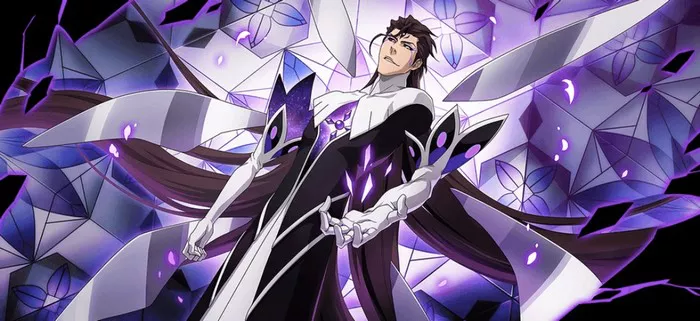Sosuke Aizen, one of the most enigmatic and powerful characters in Tite Kubo’s acclaimed manga and anime series “Bleach,” is a figure whose return was met with significant fanfare and critical analysis. Known for his intelligence, manipulative nature, and immense power, Aizen’s initial role as the captain of the 5th Division in the Gotei 13 believably camouflages his ulterior motives, only to later reveal himself as the central antagonist whose actions would have lasting implications throughout the series. This article explores the narrative significance of Aizen’s return, the context of his comeback, and the impact it has on the storyline and characters of “Bleach.”
Aizen’s Role and Initial Betrayal in Bleach
To understand the impact of Aizen’s return, it is essential to first explore his initial role and the nature of his betrayal. Aizen first appears as a mild-mannered and respected captain within the Soul Society, the afterlife realm where departed souls and the Shinigami who guide them reside. His demeanor and position earn him the trust and respect of many other characters, making his subsequent betrayal more shocking.
Aizen’s deceit culminates in a dramatic revelation where he fakes his own death and later emerges as the main antagonist. His true ambition is unveiled—to overthrow the royal family of the Soul Society and gain ultimate power by creating the Ōken, a key to the royal palace, using the souls of the inhabitants of Karakura Town. This betrayal sets the stage for major conflicts in the series and positions Aizen as a manipulative mastermind with goals that challenge the very foundations of the series’ world.
The Fall and Imprisonment of Aizen
Aizen’s initial arc concludes with the climactic battle during the “Arrancar” saga, where he faces off against Ichigo Kurosaki, the protagonist, and other key characters. Despite unveiling multiple transformations and displaying the overwhelming strength of the Hogyoku, a powerful artifact that allows him to evolve continuously, Aizen is ultimately defeated. The turning point comes with the intervention of Kisuke Urahara, whose earlier tampering with the Hogyoku leads to Aizen’s weakening.
Following his defeat, Aizen is sentenced to 20,000 years in the underground prison, Muken, the lowest level of the Soul Society’s prison. This segment of the story ostensibly concludes his arc, leaving the series to explore other threats. However, Aizen’s influence on the series and the characters continues to linger, setting the stage for his eventual return.
The Return of Aizen: Background and Buildup
Aizen’s return is masterfully teased and executed, coinciding with the “Thousand-Year Blood War” arc, which pits the Soul Society against a new formidable enemy, the Wandenreich—a group of Quincy led by Yhwach, the Quincy King. As the war progresses, it becomes apparent that the Soul Society is not sufficiently equipped to handle the overwhelming power of the Wandenreich, who manage to invade and conquer significant portions of the Soul Society.
Aizen’s Strategic Reintroduction to the Story
The decision to bring Aizen back into the fray is a calculated move by Kubo, designed to reintegrate a familiar antagonist into a narrative where his intellect and power can significantly alter the balance of power. Aizen’s comeback is not a mere plot device; it is a strategic reintroduction that adds depth and complexity to the ongoing war.
The Role of Aizen in the Thousand-Year Blood War
Aizen’s return occurs when Shunsui Kyoraku, the new Captain-Commander of the Gotei 13, visits him in Muken to seek his help against the Wandenreich. Aizen, still imprisoned and blindfolded, initially refuses but is later coerced into assisting due to the dire circumstances. His reentry into the storyline is marked by his unchanged charisma and cunning, traits that make him an indispensable ally despite his past transgressions.
Aizen’s Contribution to the War Effort
Despite his limited freedom, Aizen’s strategic acumen becomes invaluable. He confronts Yhwach in several key moments, using his zanpakuto’s ability, Kyoka Suigetsu, to create illusions that disorient and manipulate his enemies. His actions not only stall Yhwach but also provide critical assistance to Ichigo and other characters, allowing them to regroup and mount a counteroffensive.
Conclusion: Aizen’s Lasting Impact and Legacy
Aizen’s return to “Bleach” serves multiple narrative functions: it brings a familiar antagonist back into the limelight, adds complexity to the ongoing conflict, and showcases character development through his interactions with former enemies. His complex character arc—from a trusted captain to a major antagonist and then a necessary ally—illustrates a profound narrative depth, highlighting themes of power, betrayal, and redemption.
His role in the “Thousand-Year Blood War” not only cements his status as one of the most influential characters in “Bleach” but also ensures that his legacy within the series is both impactful and enduring. Aizen’s character remains a brilliant example of the blurred lines between heroism and villainy, making his every appearance significant and his contributions to the story pivotal in the broader narrative landscape of “Bleach.”


